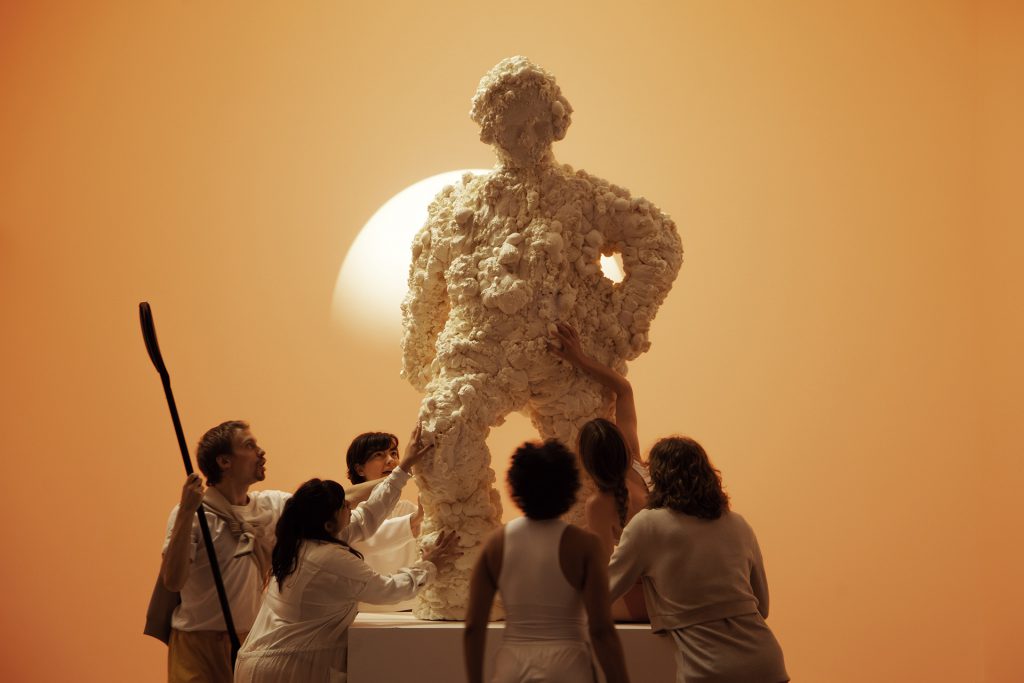‘Monuments are dialectical. Central pillars that seep into the periphery. Like the horizon line they are steadfast informants of space – stable, grand, expansive and looming. Continuously being built, and yet continuously being rinsed out by retrospective, inertia and rain.’ – Amrita Hepi
Presented in Perth for the first time, Monumental appeals to the grand sensation of the sun setting over the ocean in local imagination and the new day that rises in its place, imbued with the faint hope of possibility and renewal. Created by Bundjalung/Ngāpuhi artist and choreographer Amrita Hepi, Monumental is a video installation that begins and ends with the image of the sun rising – or setting – over the ocean. Seven dancers, Hepi among them, surround the foot of a plinth occupied by a central monument to a looming colonial figure. Bathed in orange light, the dancers serenade and then proceed to topple and destroy the monument before collectively mounting the empty plinth, building a new monument with their bodies.
Monumental crosscuts between these scenes of dancers and excerpts of archival footage, including glimpses of celebrated precision dancers the Rockettes performing ‘The Parade of Wooden Soldiers’ and choreographed tower formations of dancers’ bodies at the 1980 Moscow Olympics opening ceremony to more recent televised news stories covering the Black Lives Matter (BLM) movement and dismantling of public monuments around the world. In the wake of BLM protests and renewed calls for the removal of inherited monuments that symbolise the impact of colonialism and its ongoing legacies, Monumental offers a charged meditation on the tradition of building monuments, questioning who and what gets memorialised. The question remains: How can future monumentalisation be imagined? Hepi’s new monument, built of many bodies and promises of visibility, knowledge, and redress, is at once the articulation of such a question and a provisional answer.



